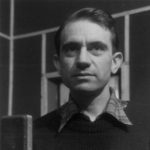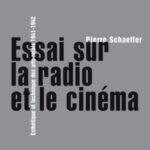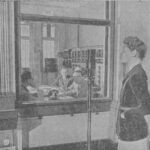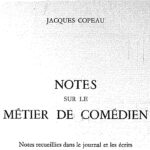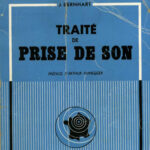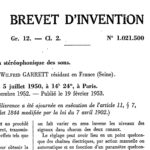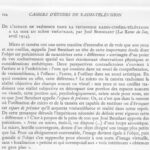Contributor Essays
Pierre Schaeffer’s Microphones (1942)
Between Radio and Theater
by Marie-Madeleine Mervant-Roux
April 15, 2020
From mid-September to mid-October 1942, Pierre Schaeffer (32) and theater director Jacques Copeau (63) co-directed a training course in Beaune (Burgundy, France): young actors were trained to use the microphone so that they might contribute to the emerging field of radiophonic arts. The archival traces left by this first Studio d’Essai will be presented in this essay.
1942 was for Pierre Schaeffer a year of changes in direction: from one passion to another, from one political perspective to another. From theater, which he had intensely experienced for a decade as a collective and educational art form, he shifted his focus to radio, starting in December 1941. That was when he became a persona non grata within Jeune France [“young France”], and was subsequently ousted from this cultural association that he had founded a year earlier with the backing of the Vichy regime.
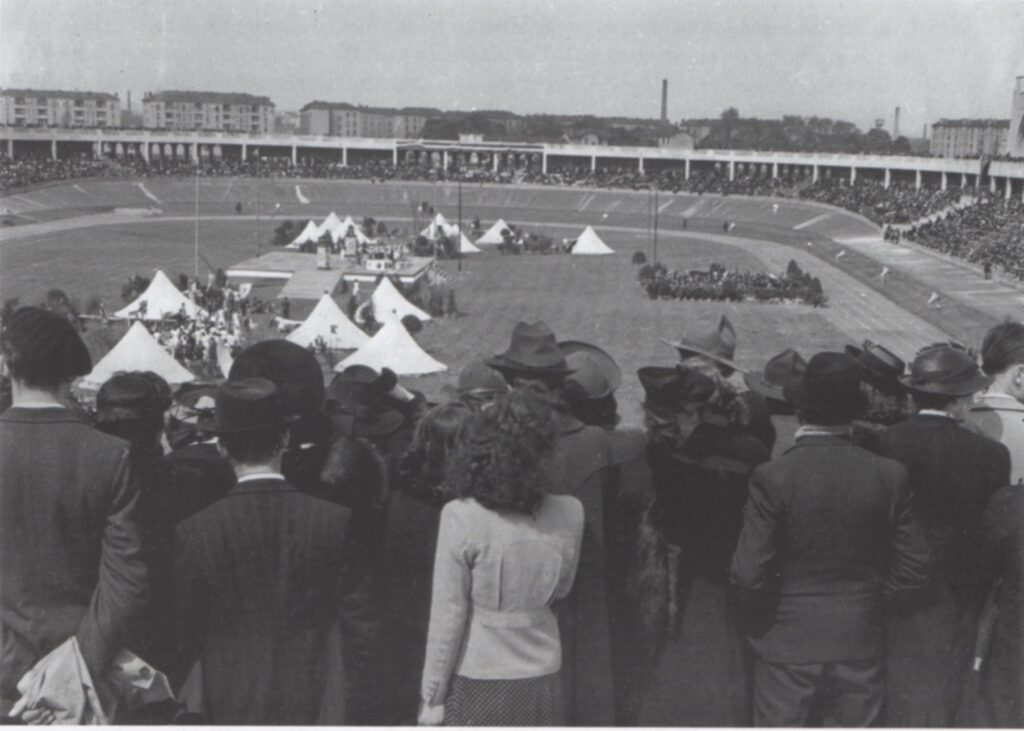
In Marseille, where he was transferred, he wrote an “essay on radio and cinema” in the spring of 1942. In this text, Schaeffer distinguished the classical arts, such as theater, which he saw as “direct arts”, from “relay arts” [“arts-relais”], which “do not transmit an object, but rather its image, not sounds, but rather a modulation” (our translation, emphasis in the original).
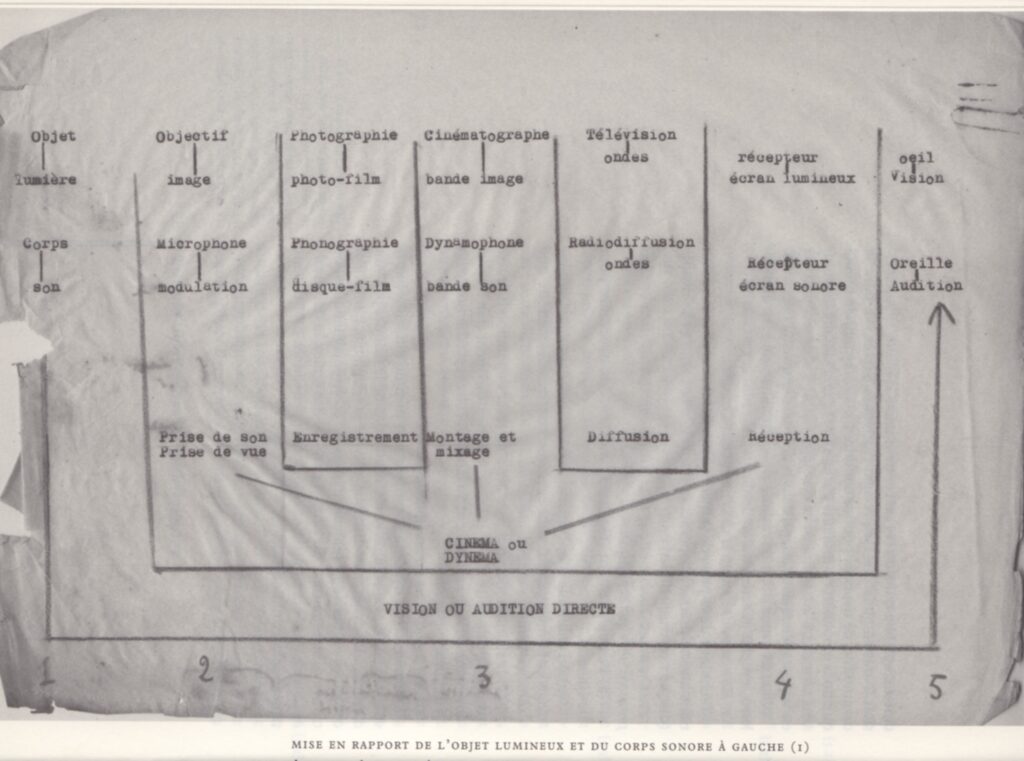
These arts transform their objects, but in different ways. In cinema, this transformation takes place in a “kinetic” way (with a change in movement and pacing), whereas the radio uses “dynamic” means (variations in intensity). When Schaeffer was called back to Paris to direct a new training center for the personnel of the national radio [la Radiodiffusion nationale], his hope was to see a new generation of cultivated technicians and actors trained in the “mechanical arts” – this gave him the idea of organizing a training session to prepare for the future “Studio d’Essai”. At the same time, Jacques Copeau had just secluded himself in Burgundy after leaving his position as director of the Comédie-Française, where he had finally yielded to Vichy authorities and assisted in removing Jewish actors from the troupe. The general director of the national radio had asked him to create a regional radio theater, and this led to Copeau making Schaeffer’s acquaintance. Copeau had radically changed theater in the 1920s, and with Schaeffer and his dreams of a new radiophonic art form, they agreed to jointly organize a training session in Beaune. This course would prove to be a laboratory for rethinking radio and theater spaces.
The trainees (some twenty young actors and a handful of young technicians) took up residence at the Hôtel des Ducs de Bourgogne (a 14th century building).
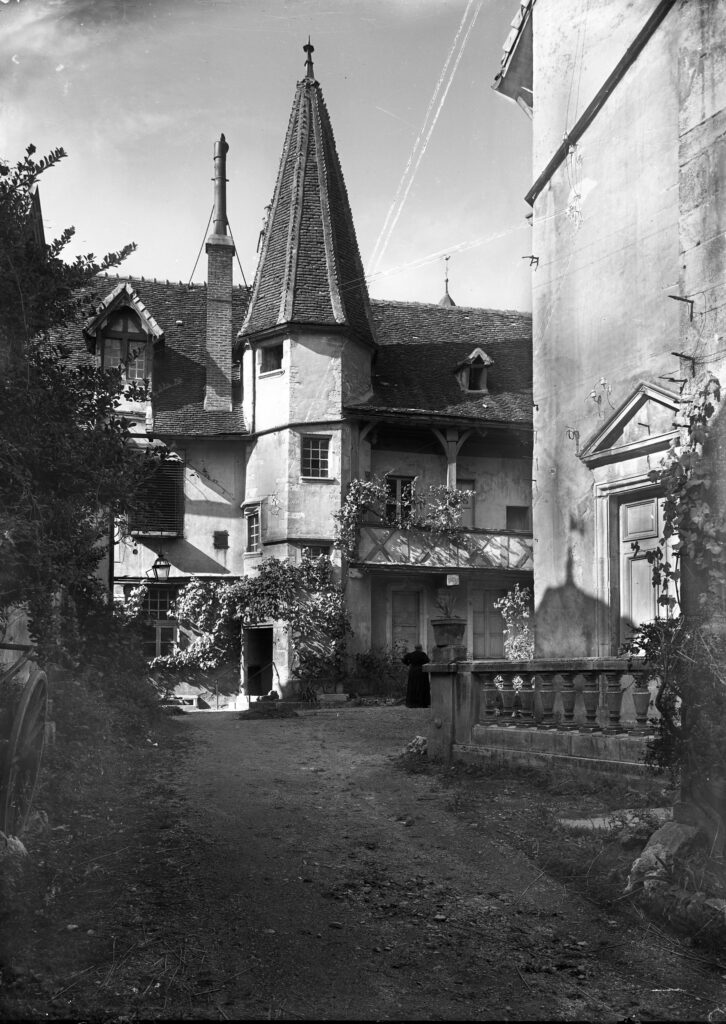
Experiments in spacing and placing microphones were conducted in two places: a large hall on the ground floor with a makeshift booth and an “open wind studio”, to use Schaeffer’s expression, in the three-sided courtyard, which was used for a number of recordings.
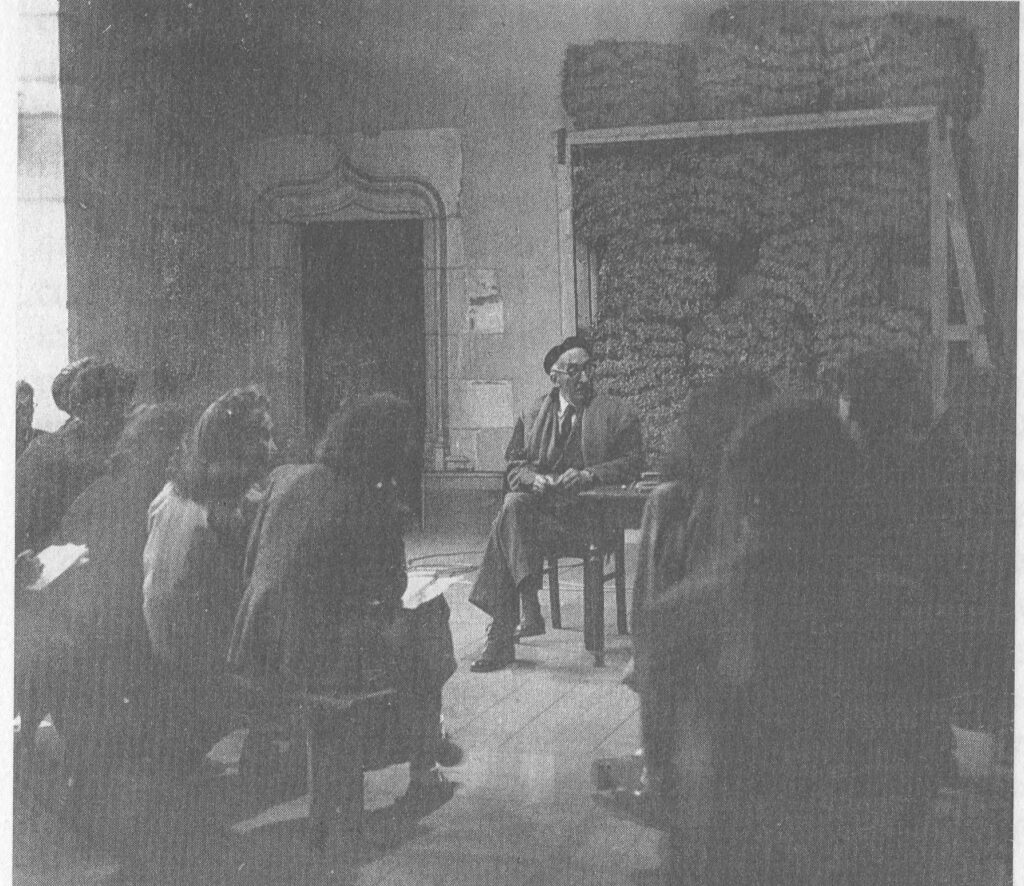
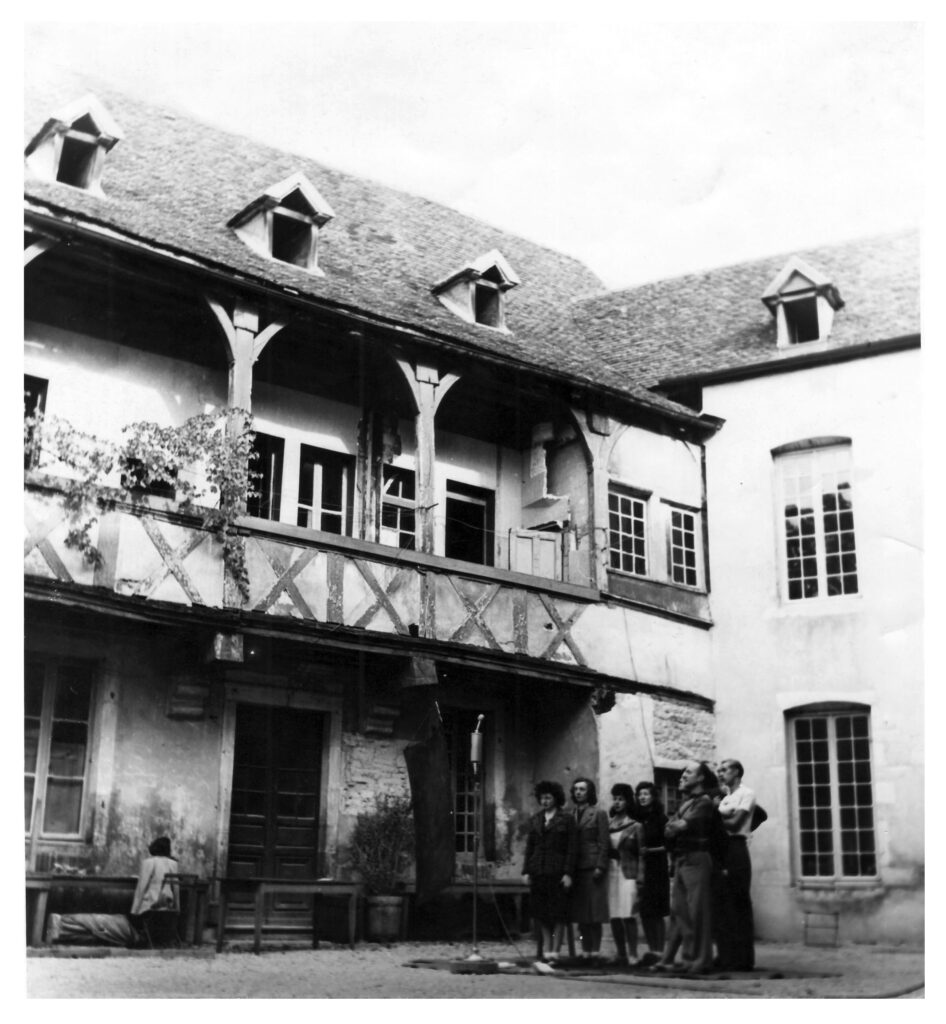
Copeau drew from this training session in Beaune his fundamental lessons on how the microphone affects the voice. Schaeffer took these up when he laid the foundation for radiophonic “writing”, in other words, when he used the “dynamic” character of the radio for aesthetic ends. He was especially interested in exploring the effects of the distance between the sound source and the microphone, using various microphone models (different models for individual reading, or chorus speaking or singing): Neumann, Melodium, and the non-directional Western Electric model 630, nicknamed “8 balls” (in French: “boule noire”). At that point, Schaeffer was no longer thinking of theater at all (theater was under close surveillance from the Vichy regime, and had become impossible for him to practice, whereas radio still gave him some margin for maneuver), but his thinking on radio would involuntarily lead to novel thinking on theater.
Not precisely a studio, as such, the courtyard of the Hôtel des Ducs de Bourgogne evoked certain historic places used, since the 1930s, by Copeau and other directors for open-air theater. During the experiments that he conducted during the course, José Bernhart, apprentice of the head sound engineer, Raoul Falaize, chosen intuitively by Schaeffer because he was also an excellent pianist, began a journey that would lead him to rethink theatrical space as potentially “dynamic” as well. The courtyard, in which he was personally interested because of its acoustics, gave him a model for this space.
One of the experiments that Bernhart conducted in Beaune, described in his Traité de prise de son [treatise on sound recording] in 1949 consisted of “using an objective method to study variations in the relationship between direct sound and reverberated sound” [p.107-109, our translation].
As explained in his treatise, using cinematic terminology, three “plans sonores” [“sonic shots”] can be distinguished, produced by different configurations of microphones: the “plan de presence” [“presence shot”], situated between the “plan d’atmosphère” [“atmospheric shot”] and the “gros plan” [“close-up shot”].
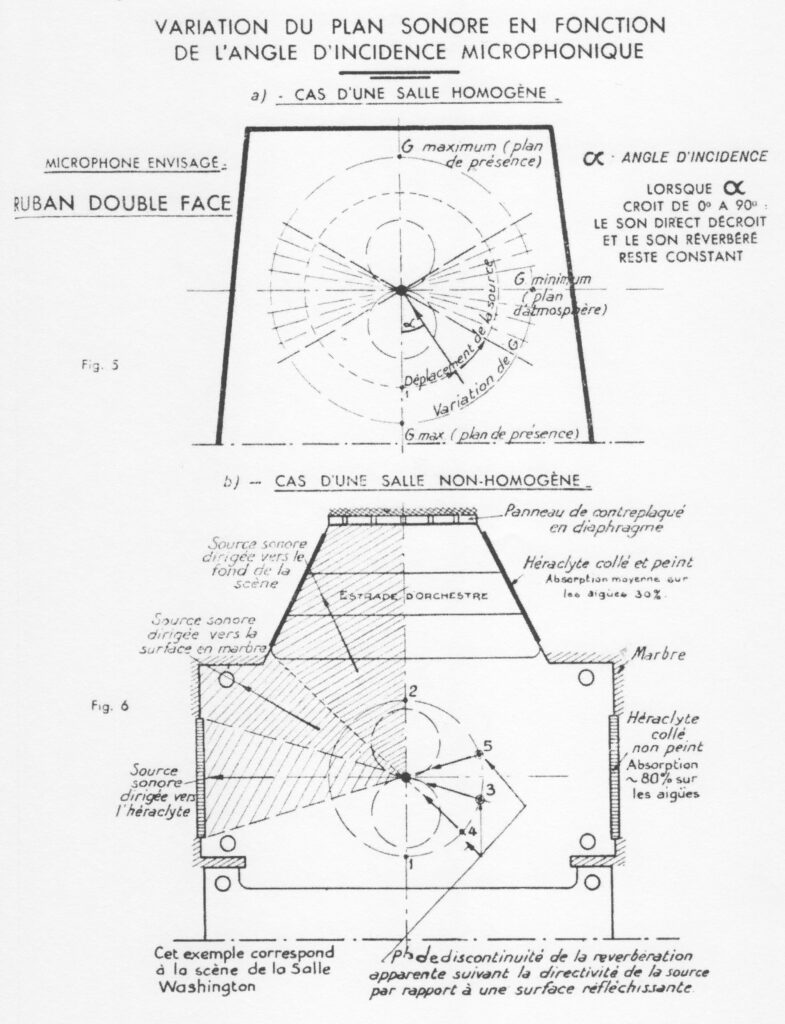
These experiments led to the conceptualization of a key notion for the aesthetics of Schaeffer and Copeau: “presence”. According to Bernhart, “‘presence’ is what we call this ability that a sound or a voice can have to force itself on our attention, so to speak, to ‘catch our ear’”, which he translates in acoustic terms (p. 95). The related idea of a “space of presence”, borrowed from the physiologist Georg von Békésy, refers to the listener’s experience, whose attention focuses on a defined space for a given period of time. Bernhart’s decisive innovation would later be to show that this space could be created artificially.
The Beaune experiments indeed had a lasting impact well beyond the radio. In 1954, in his article “De l’espace de présence dans la technique radio-cinéma-télévision à la mise en scène théâtrale” [“From the space of presence in radio, cinema, and television technique to theatrical staging”], Bernhart observed that the practice of producing and modulating the space of presence was becoming a means of expression outside the realm of the radio: in music, firstly (with experiments in “spatial movement” – he gives the example of Schaeffer), as well as in “sound and light” shows (he had coinvented “la stéréophonie dirigée” [“directional stereophony”]), and in the theater – two art forms in which the sonic modulation of presence is related to visual or luminous modulations. He stated that this aesthetic shift had been largely misunderstood up to that point, and in order to understand this shift, it was essential to study the way space is perceived. He noted that the key notion of Space of Presence “was, first and foremost, showcased by the tape recorder”, that is to say, was first used and analyzed by sound technicians. This definition of presence as the result of a technical gesture that exploits, on the one hand, an acoustic phenomenon, and on the other hand, a perceptual phenomenon, was distinctly at odds with the dominant definition of the time in the field of theater, under the influence of Henri Gouhier. For this philosopher (and theater critic), presence was “the essence of theater” (title of a book he published in 1943), and emanated fundamentally from the living, unmediated actor. With the exception of André Veinstein (author, in 1953, of a dissertation titled “La mise en scène théâtrale et sa condition esthétique” [“Theatrical staging and its aesthetic condition”] and editor in chief of the Cahiers d’Études de Radio-Télévision), who realized the significance of Bernhart’s article, this pioneering reflection from a “sound guy” escaped the attention of theater studies, where the focus was exclusively on sight. Precisely when Bernhart’s treatise on sound recording was becoming the Bible for sound directors.
This delayed effect of the Beaune training session illustrates how Schaeffer, ever the impatient one, was able to feed into scholarship even in fields of knowledge he had left behind.
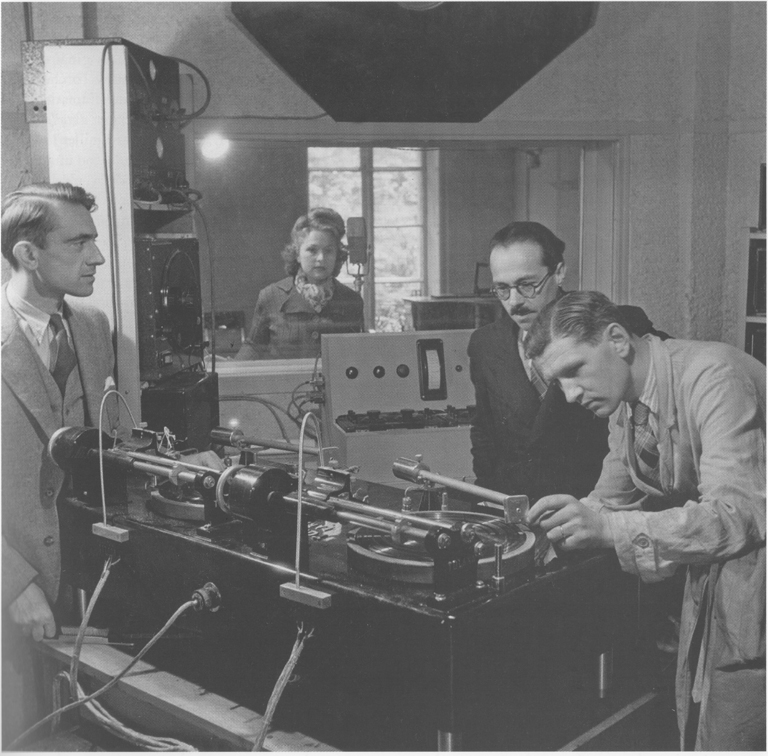
Further reading and listening:
Karine Le Bail and Martin Kaltenecker: Jalons. Les constructions impatientes, CNRS Editions, 2012. A book about Pierre Schaeffer.
Link: https://halshs.archives-ouvertes.fr/halshs-02193564
Audio document: Gallica Dix ans d’essais radiophoniques, album 5. « Machines à mémoire », 2. « Les temps héroïques ». The Liberation of Paris and the Radio.
Link: https://gallica.bnf.fr/ark:/12148/bpt6k8817050w?rk=128756;0
«La libération des ondes» ou la radio soumise aux pouvoirs. From 13′ 57″ to 30’54”.
Link: http://syntone.fr/la-liberation-des-ondes-ou-la-radio-soumise-aux-pouvoirs


